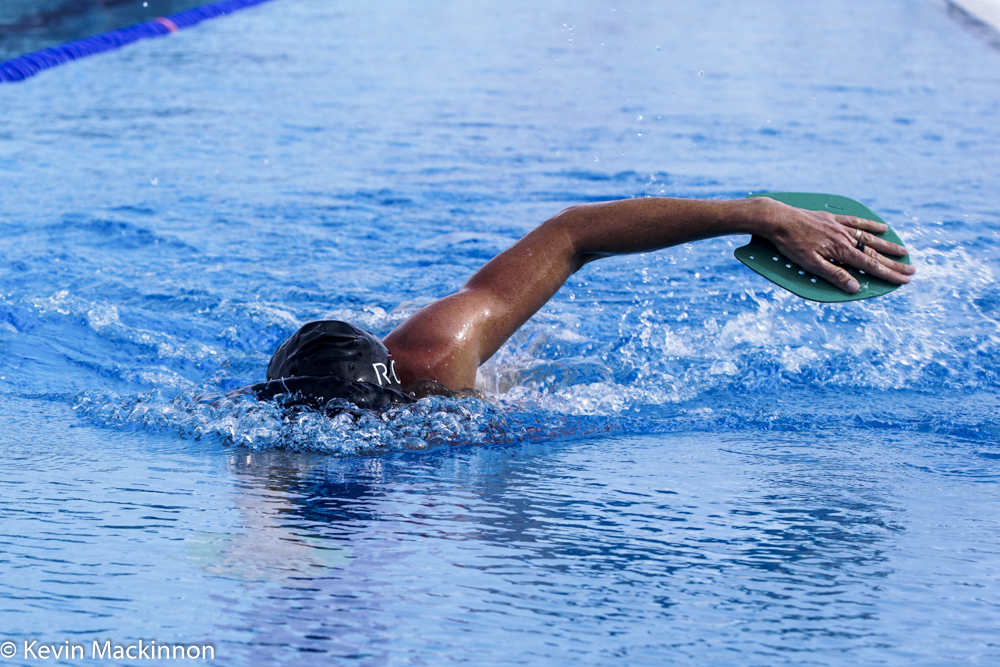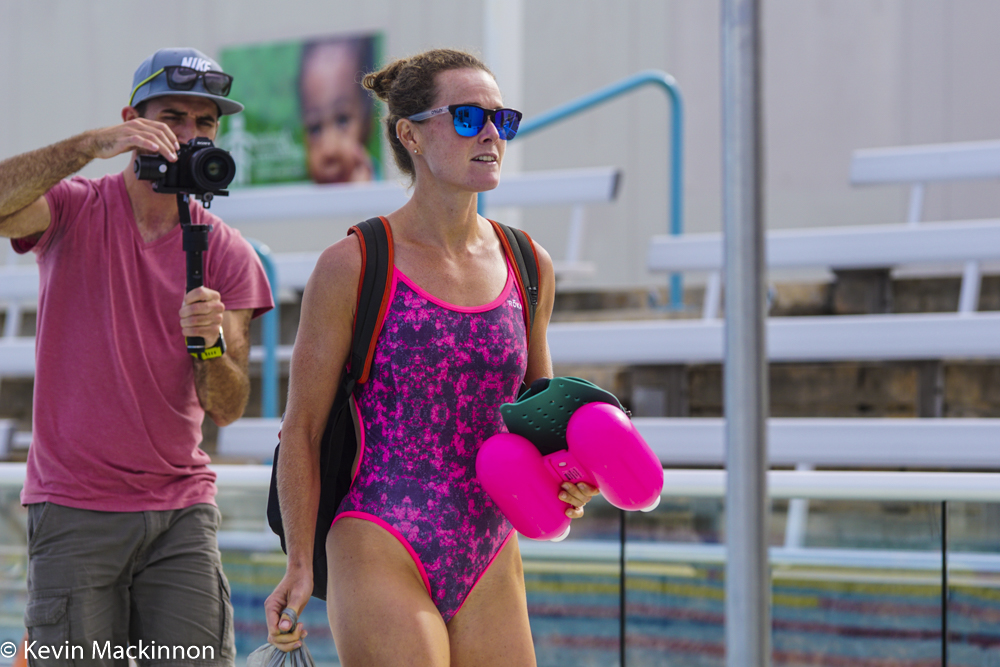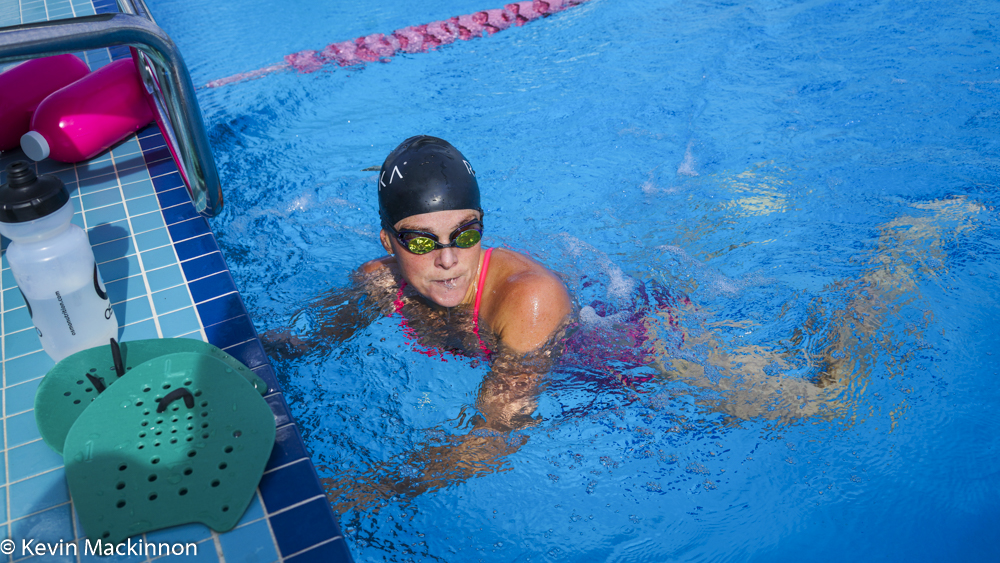Swimming 101: Should you be swimming with paddles?
While paddles are an integral part of most triathletes' swim training gear, it's wise to be cautious about how, and when, you incorporate them into your swim routine
 Photo by:
Kevin Mackinnon
Photo by:
Kevin Mackinnon
It was hard not to notice Flora Duffy’s monstrous hand paddles. During a training camp in Bermuda a few years ago, we got to see the two-time ITU World Champion pull on a large set of paddles that dwarfed her hands as she powered through the water at the Bermuda National Training Centre pool. A competitive swimmer in her youth, Duffy’s technique is outstanding, which is why she routinely leads the way out of the water at triathlon races around the world.
Duffy, like many top swimmers and triathletes, use hand paddles as a regular part of their swim training. Paddles can improve your strength and power, while also helping improve your technique.
So, should all triathletes be using hand paddles to enhance their swim training?
Related: Training with a pull buoy reaps rewards
Before you run out and grab yourself a set, though, you do need to make sure that 1) you’re actually going to benefit from using them and 2) you’re not going to hurt yourself.
Those who have swum with paddles are all too aware of the benefits they provide in terms of speed and length per stroke. Thanks to the added resistance in the water, you can’t help but go faster, and you’ll cover more ground with each stroke. Swimming faster is a great way to refine your technique, too – you’ll get a feel for the best body position and improve your catch and pull to ensure you’re getting the most out of your stroke.

Will you benefit?
If your technique won’t support it, just getting stronger isn’t going to help you swim faster. You actually know this already. Only a precious few of us triathletes could jump into a junior swim program and outswim the boys and girls in the pool. Take all of those kids to the weight room, though, and we will trounce them when it comes to strength exercises like bench press or lat pull downs. So, we know we’re stronger. Our technique, though, isn’t nearly as good as theirs, which is why they swim circles around us.
So, before you start putting in lots of metres with paddles attached to your hands, make sure that your technique is good enough that you’ll see the benefits.
“I have never been a huge advocate for most triathletes swimming with paddles,” says open water swim guru Gerry Rodrigues in his book Triathlon Swimming – Master Open-Water Swimming with the Tower 26 Method. “I do believe they have a place in the swim training of professional triathletes and elite age groupers, but only for those swimming at a certain standard … Far too many mid-pack swimmers wear oversized paddles in hopes of becoming faster, but I simply do not believe the bulk of triathletes will get faster by attaching dinner plates to their hands.”
Rodrigues believes that you need to make sure your stroke doesn’t have any technical flaws before you start using paddles.
Are you going to get hurt?
Paddles provide more resistance in the water and put added strain on your muscles and joints, especially around the shoulder. If you don’t have a decent stroke to start with, you’ll actually increase the chance of getting injured using paddles. Before you start using them, talk to a coach or experienced swimmer to get some feedback on whether or not they will be a good tool.
If you have shoulder issues at all, you probably need to steer clear of swim paddles.
If you do feel like you’re likely to get some benefits from using paddles, start small. When I used to coach a children’s triathlon program, we’d start the older kids off with finger paddles, then gradually work them to paddles the size of their hands as they got older.

Related: Swim training post COVID – getting back to the pool
Size and style
Paddles with holes in them are said to provide more feel for the water and put less stress on your shoulders. Some incorporate a fin to help with your hand entry and the finish of the stroke. Many coaches will have their swimmers remove the strap around the wrist, which means the paddles are only held on by the strap around the fingers. This is good for technique because the paddles will fall off if your hand doesn’t enter the water correctly, or if you’re not finishing your stroke properly.
Some coaches advocate that you should use paddles about the size of your hand, while others suggest you can use a paddle that’s about 10 per cent larger than your hand. There are a variety of different styles of paddles designed to work on different aspects of your stroke. Once again I’d suggest that you ask a coach what they’d suggest would help you the most.
Paddle takeaways
There’s a reason that some of the sport’s premier swimmers like Flora Duffy incorporate paddles as a regular part of their swim training routine to help with endurance and strength. Many swim and triathlon programs will combine paddle work with a pull buoy so that you’re not kicking during the sets, either, enhancing the strength benefits.
If you do decide to start using hand paddles as part of your swim training, make sure you start out gradually – both in terms of the size of the paddles and the amount of time you’re using them. Gradually build up both the volume and intensity of your paddle training over time.
